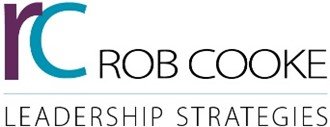
Creating Clarity of Organizational Direction and Purpose
Can you clearly state, in a way that everyone can understand and embrace, where you want your organization to be in 3, 5 and 10 years and how you plan to get there?
Establishing and clearly communicating future direction is one of the most important roles of organizational leaders. If executives cannot articulate their organization’s strategic direction in a simple, clear and consistent way then neither can anyone else.
While there is no single, clear and consistent definition of strategy, or how to build one, I believe that the fundamental purpose of strategy is to define the concrete choices the organization needs to make about what to continue, what to stop and what new things need to be done. A great deal of what will be done next year is the same as this year, however, there may be a need to increase the efficiency or effectiveness of these activities. More important are what should be stopped as these things are no longer taking the organization to its’ desired future and what new things should be explored or started as will take the organization in a different direction.
I have outlined below what I believe are some of the most concrete and valuable elements that most effectively create clarity of strategic direction and provide a foundation that will enable people across the organization to ensure their work is clearly aligned.
Fundamental Core Purpose
Purpose answers the question ‘why does the organization exist?’ and it should last for the long term. It defines how the organization contributes to a better world and defines the outcomes of the work the organization does. It clarifies the underlying reason for being and existing. Patrick Lencioni states that “if leaders can’t define this they cannot rightfully expect employees to get out of bed every morning with any sense of purpose beyond completing tasks and keeping their jobs.”
Core Values (How to Behave)
Core values are the few essential and enduring principles that guide behaviours and decisions. This is not a laundry list of every desired behaviour, it is the identification of the few core values that will drive all decisions and actions in the organization.
Vision and Future Aspirations
Ask an organization what their vision is and the response you will likely get is a one liner vision statement that sounds like a corporate slogan. These one-liners usually sound something like “one company, one vision” or “to be the number one [place your industry, product or organization name here] in the world” or “to provide world class [place your industry, product or organization name here]” I think you get the idea.
I do not regard one-liner slogans as vision. Vision needs to define what the organization could become and is a set of aspirations that define what ‘winning’ looks. The aspirations should ignite passion and build commitment. It includes the customer solutions (products & services), customers, market presence, reputation, values, etc. that the organization will strive to have in place in the future.
Unique Value Proposition (How to win)
The organizations unique value proposition defines what the organization does or will do differently from, or better than others. It defines what the organization is, or will be, the ‘best in the world’ at and what makes it distinctive and unique?
Overriding Goal (Most important right now)
The overriding goal is the single precise priority that will guide the organization over a defined time frame. The overriding goal can be for the next year and/or the next ten. It defines the ends that the strategy is designed to achieve. It should be specific and measurable.
Obstacles to Successful Achievement of Vision and Goals
There will be many potential challenges and barriers to achieving success. These range from insufficient capability to a resistant culture, lack of motivation and uncooperative partners. Each of these obstacles need to be defined clearly so that they can be addressed.
Strategies for Success (How to Win)
Strategies define the high-level plan of action or the ‘game plan’ for overcoming obstacles and moving forward. Strategies define how the organization will achieve its stated goals and vision and are the intentional directions that guide decision making and provide a ‘lense’ through which decisions must be evaluated to ensure consistency and alignment.
Strategies also define how the organization will both preserve its’ fundamental purpose and core while stimulating progress towards the vision and the achievement of the overriding goal. Strategies are the intentional directions that guide decision making and provide a ‘lens’ through which decisions must be evaluated to ensure consistency and alignment.
Communicating the Strategic Direction and Engagement in Action Planning
Too many strategic direction documents end up as nothing more than documents on a shelf. Strategic directions need to be broadly communicated and there needs to be ample opportunity for dialogue throughout the organization on what needs to be in place if the direction is to be achieved. Once the direction has been defined it needs to be communicated throughout the organization and people need to be engaged in defining organizational and individual actions for implementing the strategy.
References:
Playing to Win: How Strategy Really Works by A.G. Lafley, Roger Martin,
The Advantage by Patrick Lencioni
Good to Great by Jim Collins
Competitive Advantage by Michael Porter
Can You Say What Your Strategy Is by David Collins and Michael Rukstad
About the Author: Rob Cooke is a leadership advisor, strategist and coach. Drawing on a strong background in business and organizational development, Rob utilizes his extensive consulting experience to help leaders address emerging challenges, seize opportunities and execute approaches to achieve personal, leadership and business goals. Over the years Rob has helped hundreds of leadership teams to define their organization’s strategic direction.
June 20, 2017 | Leadership Development
